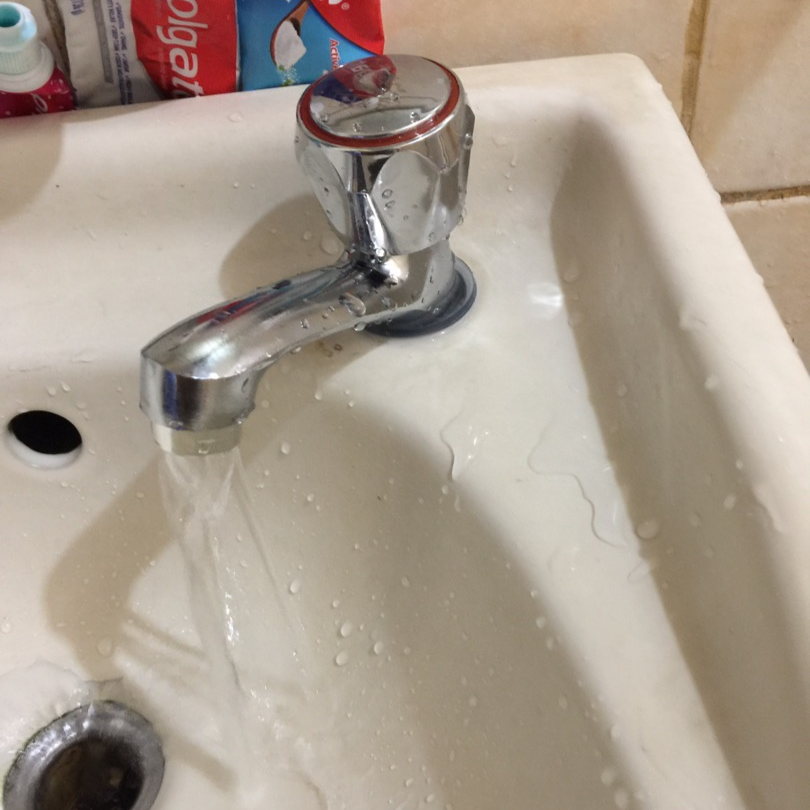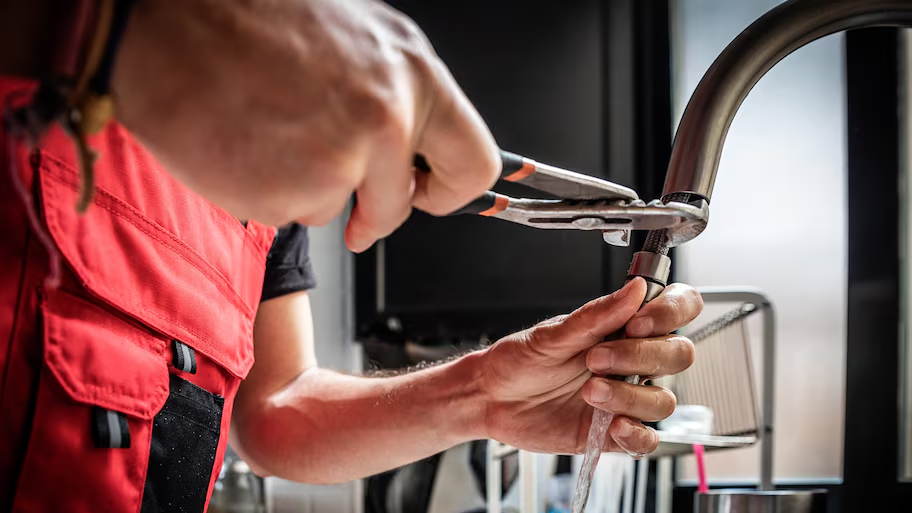When It's Essential to Fix a Dripping Faucet
When It's Essential to Fix a Dripping Faucet
Blog Article
We have noticed this article about Leaky Faucets: Why They Happen & What to Do About Them down the page on the net and concluded it made good sense to quickly share it with you here.

Leaking taps might appear like a small aggravation, however their influence goes beyond just the annoyance of the noise. From drainage to incurring unnecessary monetary expenses and wellness dangers, neglecting a dripping faucet can bring about various consequences. In this short article, we'll explore why it's vital to resolve this usual home issue promptly and effectively.
Wastefulness of Water
Environmental Impact
Trickling taps add dramatically to water waste. According to the Environmental Protection Agency (EPA), a solitary faucet trickling at one drip per second can waste greater than 3,000 gallons of water each year. This not just strains water sources however additionally impacts environments and wildlife depending on them.
Step-by-Step Guide to Taking Care Of a Dripping Tap
Tools Called for
Prior to trying to deal with a dripping tap, gather the required devices, consisting of an adjustable wrench, screwdrivers, substitute parts (such as washing machines or cartridges), and plumber's tape.
Common Tap Issues and Their Solutions
Recognize the type of faucet and the specific problem triggering the drip. Typical issues consist of damaged washers, corroded shutoff seats, or faulty O-rings. Refer to producer directions or on the internet tutorials for detailed advice on repairs.
Financial Costs
Increased Water Bills
Beyond the environmental impact, trickling taps can blow up water costs considerably. The collected waste in time equates into greater energy costs, which could have been stayed clear of with prompt repair work.
Potential Residential Property Damage
Additionally, prolonged dripping can result in harm to fixtures and surface areas bordering the faucet. Water accumulation can trigger discoloration, corrosion, and also architectural concerns if left neglected, leading to additional repair costs.
Health Worries
Mold and Mold Development
The constant existence of wetness from a dripping tap produces an optimal environment for mold and mold growth. These fungis not only endanger indoor air high quality but likewise pose wellness dangers, specifically for people with respiratory system conditions or allergies.
Waterborne Conditions
Stagnant water in leaking faucets can end up being a breeding place for microorganisms and other microorganisms, raising the risk of waterborne illness. Pollutants such as Legionella germs prosper in stagnant water, potentially resulting in serious health problems when ingested or breathed in.
DIY vs. Expert Repair work
Benefits and drawbacks of DIY Repair Service
While some may attempt to take care of a trickling tap themselves, DIY repairs feature their own set of difficulties. Without appropriate expertise and tools, DIY attempts can exacerbate the concern or result in incomplete fixings, extending the trouble.
Benefits of Hiring an Expert Plumber
Hiring a specialist plumber guarantees that the underlying source of the dripping tap is addressed successfully. Plumbings have the proficiency and tools to identify and fix tap concerns successfully, saving time and reducing the danger of more damages.
Ecological Responsibility
Individual Payment to Preservation
Taking responsibility for fixing leaking taps lines up with wider efforts toward water preservation and environmental sustainability. Every individual's actions collectively make a substantial influence on preserving priceless resources.
Sustainable Living Practices
By prioritizing punctual repair work and adopting water-saving behaviors, individuals add to sustainable living techniques that benefit both existing and future generations.
Preventive Measures
Regular Upkeep Tips
To prevent dripping taps, perform routine upkeep such as cleansing aerators, inspecting for leaks, and changing damaged components without delay. Furthermore, think about mounting water-saving tools or updating to more efficient fixtures.
Significance of Prompt Fixes
Addressing dripping taps as quickly as they're observed protects against additional water waste and prospective damages, eventually saving both water and money over time.
Influence On Property Value
Perception of Well-Maintained Residential Property
Maintaining a building in good condition, consisting of addressing maintenance issues like trickling taps, improves its viewed worth and charm among potential customers or occupants.
Influence on Resale Worth
Qualities with well-kept plumbing components, including taps, command higher resale worths in the real estate market. Resolving dripping taps can contribute to a positive impact during building evaluations and arrangements.
Conclusion
Dealing with a trickling tap goes beyond mere convenience; it's a crucial step towards preserving water, lowering financial prices, and securing health and wellness and building. Whether through do it yourself fixings or expert help, doing something about it to deal with dripping taps is a tiny yet impactful means to promote responsible stewardship of sources and add to a healthier, extra lasting future.
How to Fix a Leaky Faucet: Step-by-Step Repair Guide
A leaky faucet may seem like a simple annoyance, but if it's not fixed promptly, that leak could cost hundreds to potentially thousands. From water damage to mold, mildew, and high water bills, even a tiny leak can be catastrophic if left unattended. Damage like this can even affect the overall value of your home, so it's important to take the right approach for leaky faucet repair. You may need the help of a plumber in some cases, but we've got a few tips you can try on how to fix a leaky faucet before calling the pros.
Four Faucet Types
When you're learning how to fix a leaky faucet, the first step is knowing what kind of faucet you're working with! There are four common types.
Cartridge Faucets
Cartridge faucets come in one- or two-handled varieties. In one-handled cartridge faucets, hot and cold water combines in a single cartridge. In the two-handled versions, hot and cold water are controlled separately and mixed in the faucet.
Ball Faucets
Ball faucets have a single lever you push up and down to adjust the pressure and rotate to change the temperature. A slotted metal ball controls the amount of water allowed into the spout.
Compression Washer Faucets
They're the oldest type of faucet, but they're still used in many homes — especially older ones. Compression faucets have two separate handles that, when turned, raise or lower the washer that seals a water valve. This valve stops water from flowing through the faucet when it is turned off.
Disc Faucets
Disc faucets rarely need to be repaired due to their maintenance-free design. The water flow is controlled by two discs — the upper one raises and lowers against a fixed lower disc, creating a watertight seal. If your disc faucet starts leaking, you may need to replace the seals or clean residue buildup from the inlets.
Fixing a Leaky Faucet
Step 1: Turn Off the Water
Whether you're learning how to fix a leaky bathtub faucet or how to fix a leaky kitchen faucet, always turn off the water supply to your working area when you're fixing a leak. The last thing you want is a flood added to your list of things to fix.
Look for the shutoff valves below your sink or around the tub and turn them clockwise to stop the water flow. If your faucet doesn't have shutoff valves, you may need to turn off the water for the whole house. Check to make sure it's off by turning the faucet on. If nothing comes out, you're ready to start the repair.
Step 2: Take Apart the Faucet
How you disassemble your faucet depends on the type of fixture you have. You can use a flathead screwdriver to remove the caps on top of the handle or handles for cartridge and compression faucets. Inside, you should see handle screws. Unscrew these with a screwdriver to remove the handle.
Disc- and ball-style faucets will typically have an inlet screw near the handle, and removing that will reveal the interior of the faucet.
Detach the Valve Stem
For cartridge- and compression-style faucets, you'll see the inner valve stem or cartridge once you remove the faucet handles. If you have a compression faucet, unscrew the brass valve stem. If you have a cartridge faucet, pull out the cartridge. If your cartridge has been in place for a while, it may require some tools or extra force to remove it due to mineral deposits.
Examine and Replace Parts
Once you've removed the parts, check them out to confirm what needs to be replaced. You may see corroded rubber washers, O-rings, stems, or cartridges. On a ball-style faucet, check the seats and springs for damage.
If you need to repair a leaky disc faucet, check the inlet and seals on the lower disc.
Once you determine what parts must be replaced, visit your local hardware store. Bring the damaged parts with you to ensure you can purchase the correct components to replace them.
Clean Valves and Faucet Cavity
If you've removed a stem or cartridge, you may notice mineral buildup in the faucet's threads. Use white vinegar to clean the valve seat by soaking it for a few minutes, then scrub it away with a soft toothbrush and rinse with warm water. You can also clean the interior of the faucet in the same way.
Reassemble the Faucet
Once your faucet is cleaned and the required parts have been replaced, it's time to reassemble it. Put the pieces back together and slowly turn the water supply back on. Doing this slowly is crucial because too much initial water pressure can damage the new hardware you've just installed.
https://homewarranty.firstam.com/blog/how-to-fix-leaky-faucet

Do you really like more info about 4 Common Reasons for a Leaky Faucet? Make a review directly below. We will be delighted to find out your views about this post. Hoping that you visit us again in the near future. Sharing is caring. You won't know, you might be helping someone out. Thank you for taking the time to read it.
Report this page